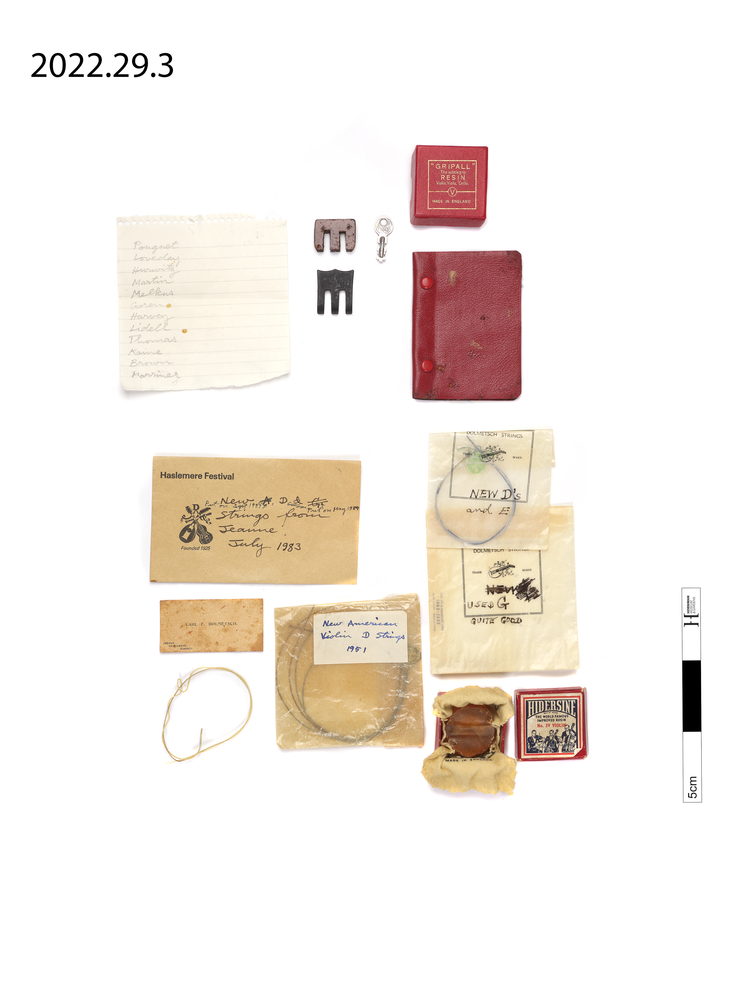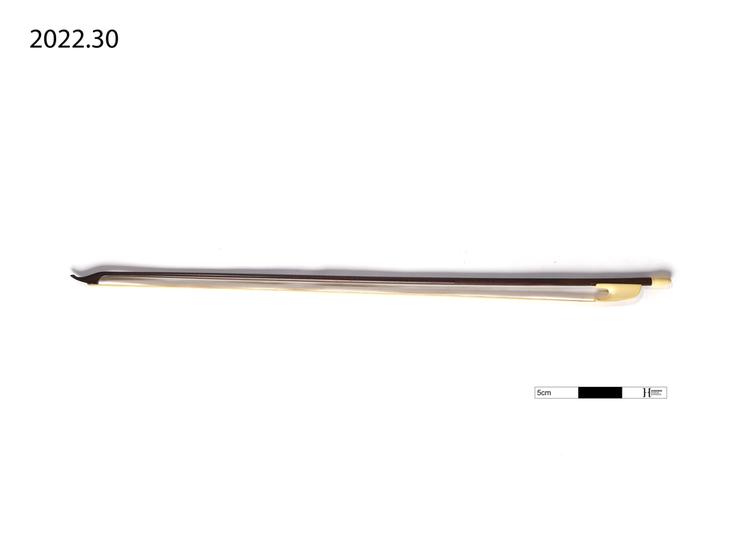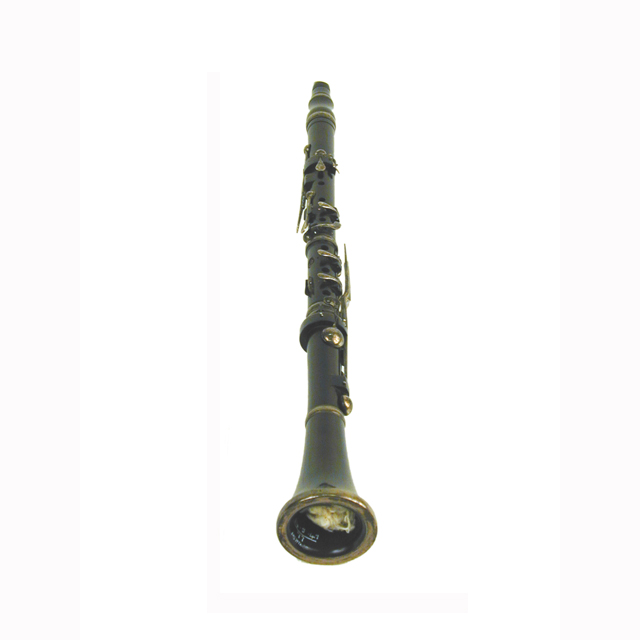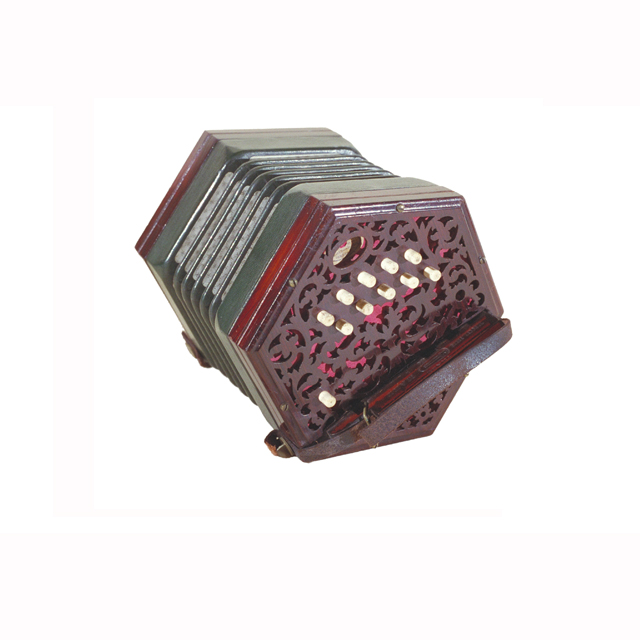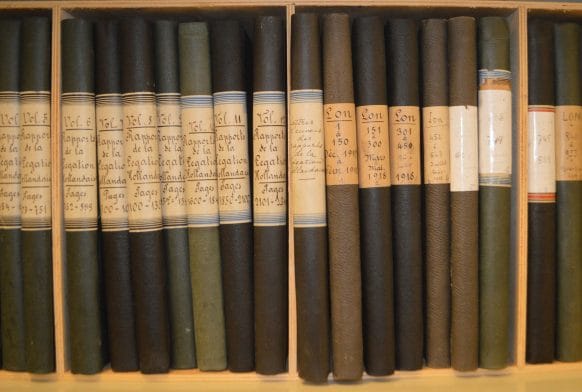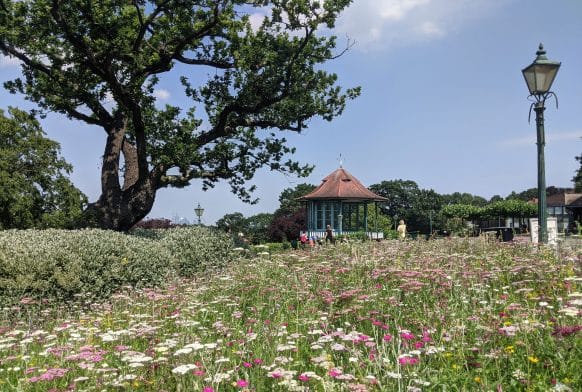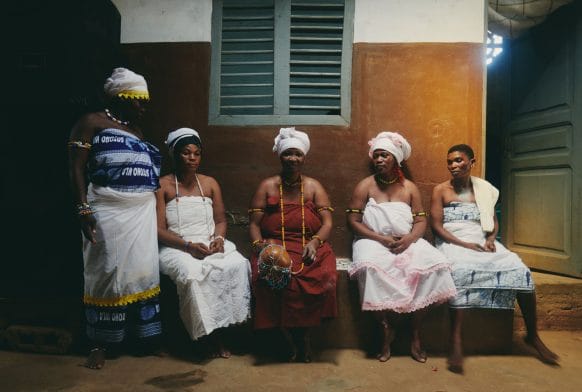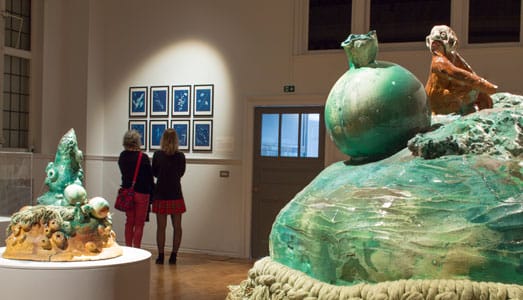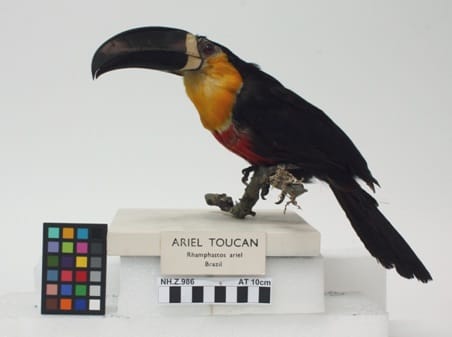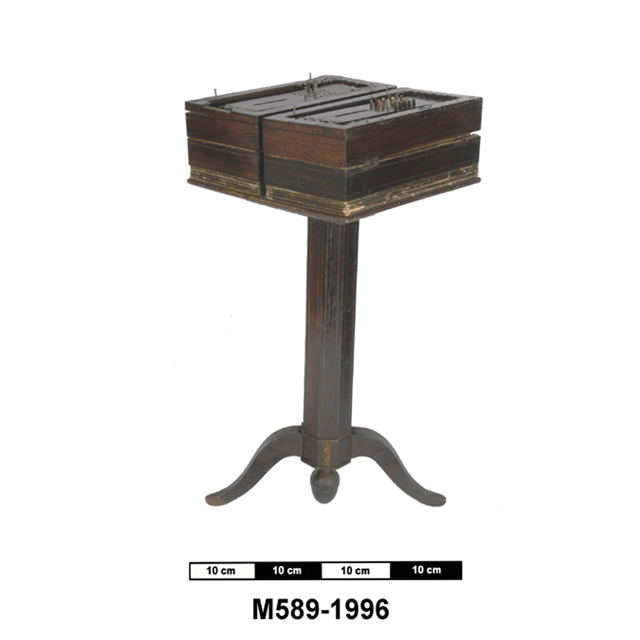
Prototype foot powered concertina. No serial number. Labelled internally: 'left' and 'right', with the note name stamped adjacent to each pallet. Each 'end' section measures 11.75" x 5.5", and has a solid rosewood end, with a damaged rectangular array of fretwork, with pine backing boards, and an air slit below the keys, the deep end frames are each hinged to the tripod top, and secured with a catch. All hinges damaged. 43 domed ivory buttons: 21 each side, 15 absent left-hand, 3 absent right-hand. The flat bases of the buttons seat into bushed holes with a coiled spring beneath. Three-fold leather edged bellows, patterned papers, both steadied by a brass rod sliding up and down in a guide. Nickel reeds in square end beds, on a shallow reed pan screwed under the action board. The whole is mounted on an octagonal column, rosewood veneered and purfled with two remaining tripod feet, and the catgut thong which works the bellows. This tripod model was patented in 1844. Two separate 'English' fingered keyboards mounted on individual bellows, set on a tripod and operated by a treadle.



